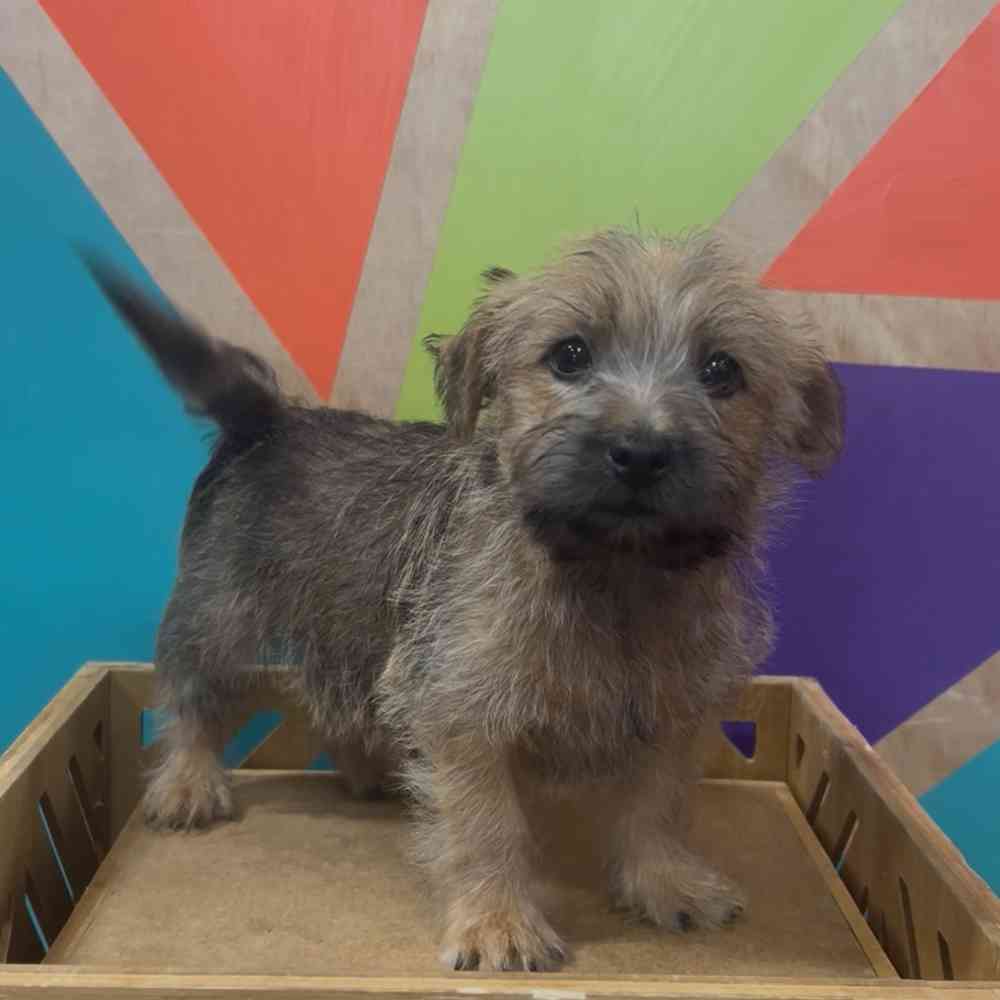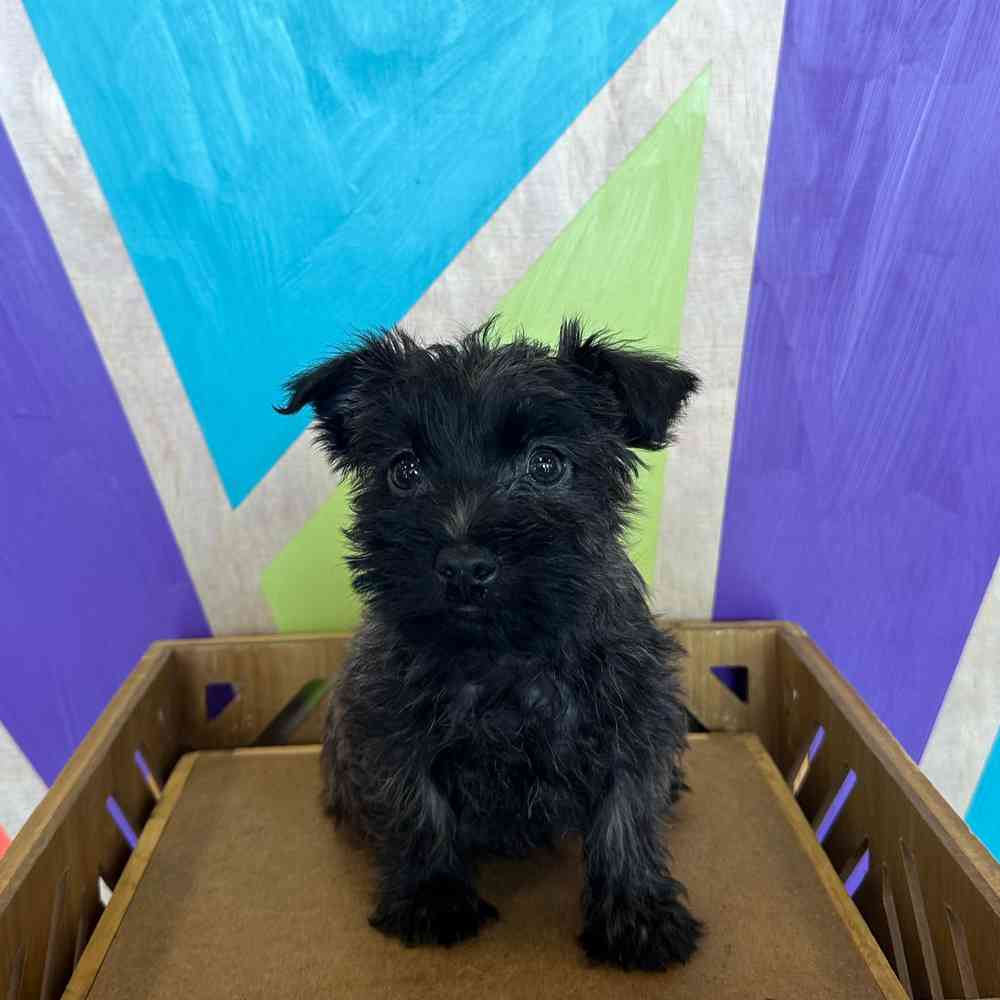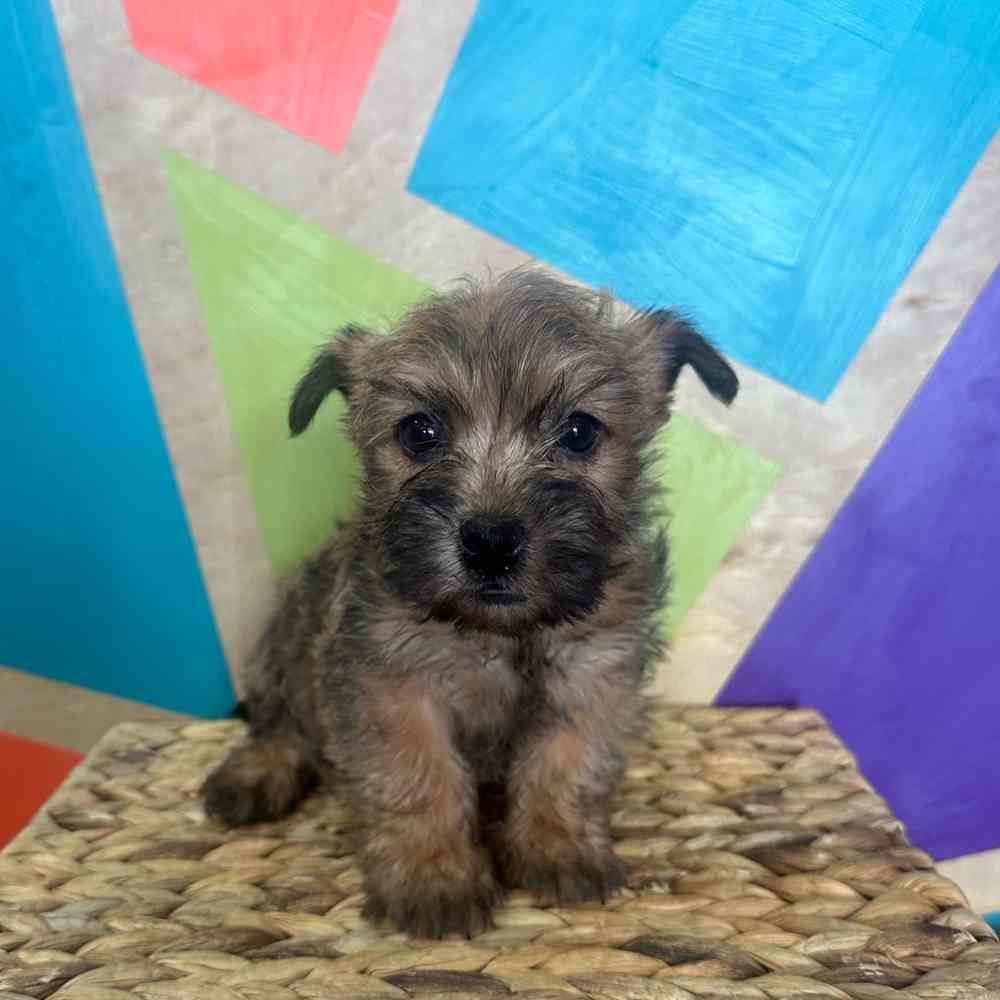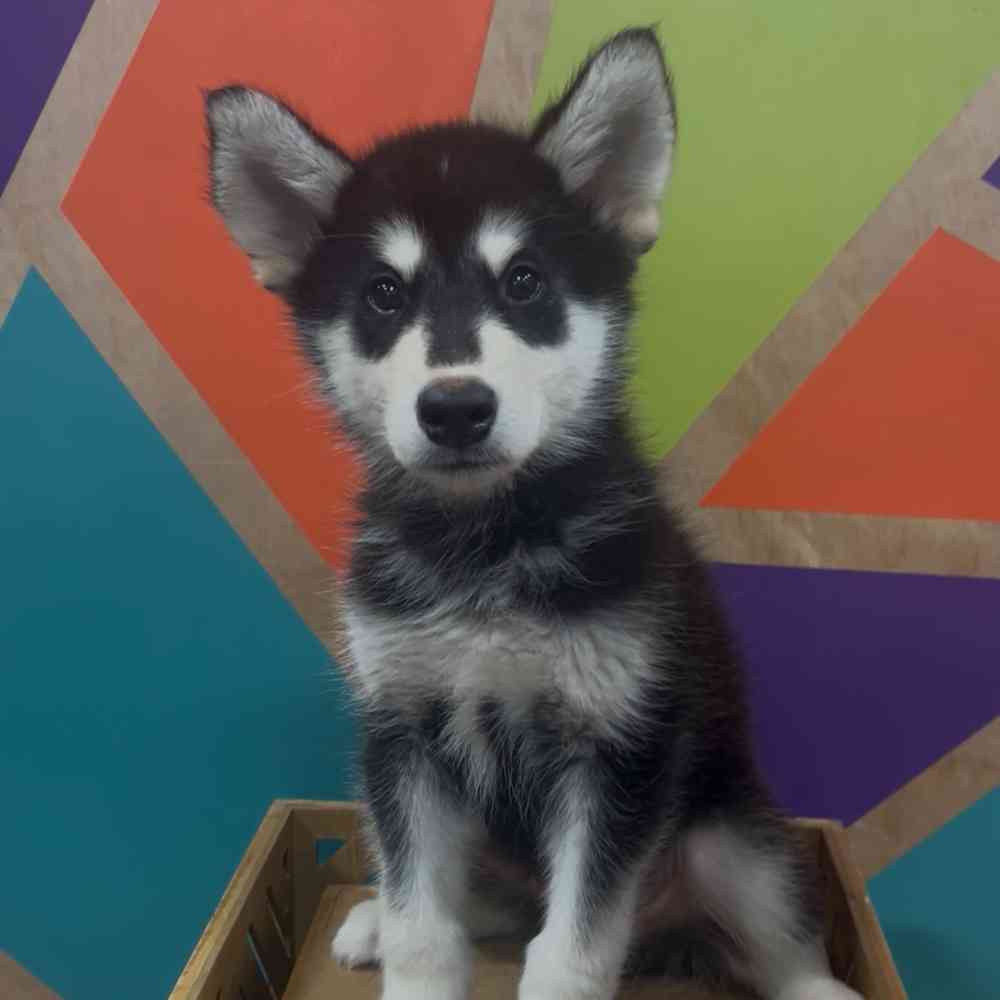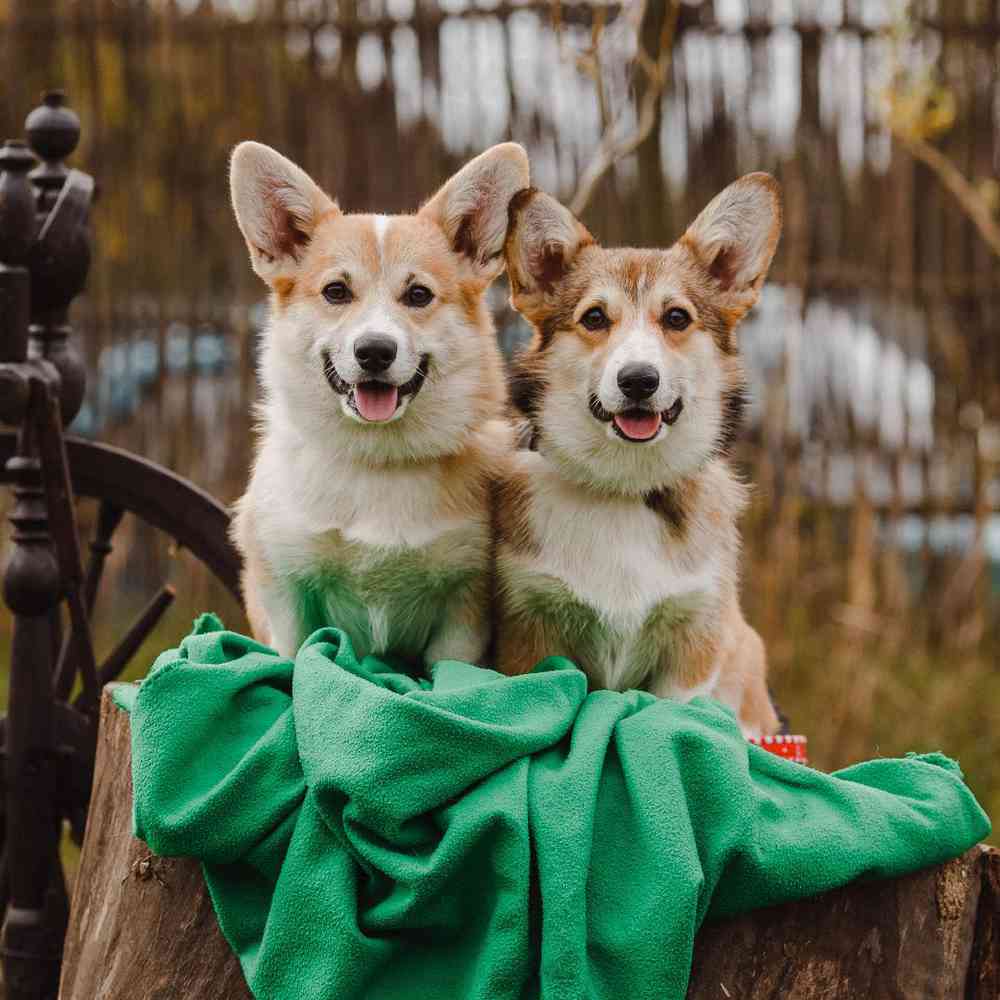




AKC Registrable
Cardigan Welsh Corgi
The Cardigan Welsh Corgi is a masterpiece of the breeder’s art: Every aspect of its makeup is perfectly suited to moving cattle, and yet it is so congenial and sweet-faced that it would be a cherished companion even if it never did a day’s work.
Available Puppies
Breed Standard
General Appearance
Low set with moderately heavy bone and deep chest. Overall silhouette long in proportion to height, culminating in a low tail set and fox-like brush. General Impression - A handsome, powerful, small dog, capable of both speed and endurance, intelligent, sturdily built but not coarse.
Head
The head should be refined in accordance with the sex and substance of the dog. It should never appear so large and heavy nor so small and fine as to be out of balance with the rest of the dog. Expression alert and gentle, watchful, yet friendly. Eyes medium to large, not bulging, with dark rims and distinct corners. Widely set. Clear and dark in harmony with coat color. Blue eyes (including partially blue eyes), or one dark and one blue eye permissible in blue merles, and in any other coat color than blue merle are a disqualification. Ears large and prominent in proportion to size of dog. Slightly rounded at the tip, and of good strong leather. Moderately wide at the base, carried erect and sloping slightly forward when alert. When erect, tips are slightly wide of a straight line drawn from the tip of the nose through the center of the eye. Small and/or pointed ears are serious faults. Drop ears are a disqualification. Skull - Top moderately wide and flat between the ears, showing no prominence of occiput, tapering towards the eyes. Slight depression between the eyes. Cheeks flat with some chiseling where the cheek meets the foreface and under the eye. There should be no prominence of cheekbone. Muzzle from the tip of the nose to the base of the stop should be shorter than the length of the skull from the base of the stop to the high point of the occiput, the proportion being about three parts muzzle to five parts skull; rounded but not blunt; tapered but not pointed. In profile the plane of the muzzle should parallel that of the skull, but on a lower level due to a definite but moderate stop. Nose black, except in blue merles where black noses are preferred but butterfly noses are tolerated. A nose other than solid black in any other color is a disqualification. Lips fit cleanly and evenly together all around. Jaws strong and clean. Underjaw moderately deep and well formed, reaching to the base of the nose and rounded at the chin. Teeth strong and regular. Scissors bite preferred; i.e., inner side of upper incisors fitting closely over outer side of lower incisors. Overshot, undershot, or wry bite are serious
Neck, Topline, Body
Neck moderately long and muscular without throatiness. Well developed, especially in males, and in proportion to the dog's build. Neck well set on; fits into strong, well shaped shoulders. Topline level. Body long and strong. Chest moderately broad with prominent breastbone. Deep brisket, with well sprung ribs to allow for good lungs. Ribs extending well back. Loin - short, strong, moderately tucked up. Waist well defined. Croup - Slight downward slope to the tail set. Tail - set fairly low on body line and reaching well below hock. Carried low when standing or moving slowly, streaming out parallel to ground when at a dead run, lifted when excited, but never curled over the back. High tail set is a serious fault.
Forequarters
The moderately broad chest tapers to a deep brisket, well let down between the forelegs. Shoulders slope downward and outward from the withers sufficiently to accommodate desired rib-spring. Shoulder blade (scapula) long and well laid back, meeting upper arm (humerus) at close to a right angle. Humerus nearly as long as scapula. Elbows should fit close, being neither loose nor tied. The forearms (ulna and radius) should be curved to fit spring of ribs. The curve in the forearm makes the wrists (carpal joints) somewhat closer together than the elbows. The pasterns are strong and flexible. Dewclaws removed. The feet are relatively large and rounded, with well filled pads. They point slightly outward from a straight-ahead position to balance the width of the shoulders. This outward point is not to be more than 30 degrees from center line when viewed from above. The toes should not be splayed. The correct Cardigan front is neither straight nor so crooked as to appear unsound. Overall, the bone should be heavy for a dog of this size, but not so heavy as to appear coarse or reduce agility. Knuckling over, straight front, fiddle front are serious faults.
Hindquarters
Well muscled and strong, but slightly less wide than shoulders. Hipbone (pelvis) slopes downward with the croup, forming a right angle with the femur at the hip socket. There should be moderate angulation at stifle and hock. Hocks well let down. Metatarsi perpendicular to the ground and parallel to each other. Dewclaws removed. Feet point straight ahead and are slightly smaller and more oval than front. Toes arched. Pads well filled. Overall, the hindquarters must denote sufficient power to propel this low, relatively heavy herding dog efficiently over rough terrain.
Coat
Medium length but dense as it is double. Outer hairs slightly harsh in texture; never wiry, curly or silky. Lies relatively smooth and is weather resistant. The insulating undercoat is short, soft and thick. A correct coat has short hair on ears, head, the legs; medium hair on body; and slightly longer, thicker hair in ruff, on the backs of the thighs to form "pants," and on the underside of the tail. The coat should not be so exaggerated as to appear fluffy. This breed has a shedding coat, and seasonal lack of undercoat should not be too severely penalized, providing the hair is healthy. Trimming is not allowed except to tidy feet and, if desired, remove whiskers. Soft guard hairs, uniform length, wiry, curly, silky, overly short and/or flat coats are not desired. A distinctly long or fluffy coat is an extremely serious fault.
Color
All shades of red, sable and brindle. Black with or without tan or brindle points. Blue merle (black and gray; marbled) with or without tan or brindle points. There is no color preference. White flashings are usual on the neck (either in part or as a collar), chest, legs, muzzle, underparts, tip of tail and as a blaze on head. White on the head should not predominate and should never surround the eyes. Any color other than specified and/or body color predominantly white are disqualifications.
Size, Proportion, Substance
Overall balance is more important than absolute size. Dogs and bitches should be from 10½ to 12½ inches at the withers when standing naturally. The ideal length/height ratio is 1.8:1 when measuring from the point of the breast bone (prosternum) to the rear of the hip (ischial tuberosity) and measuring from the ground to the point of the withers. Ideally, dogs should be from 30 to 38 pounds; bitches from 25 to 34 pounds. Lack of overall balance, oversized or undersized are serious faults.
Gait
Free and smooth. Effortless. Viewed from the side, forelegs should reach well forward when moving at a trot, without much lift, in unison with driving action of hind legs. The correct shoulder assembly and well fitted elbows allow for a long free stride in front. Viewed from the front, legs do not move in exact parallel planes, but incline slightly inward to compensate for shortness of leg and width of chest. Hind legs, when trotting, should reach well under body, move on a line with the forelegs, with the hocks turning neither in nor out, and in one continuous motion drive powerfully behind, well beyond the set of the tail. Feet must travel parallel to the line of motion with no tendency to swing out, cross over, or interfere with each other. Short choppy movement, rolling or high-stepping gait, close or overly wide coming or going, are incorrect. This is a herding dog which must have the agility, freedom of movement, and endurance to do the work for which he was developed.
Temperament
Affectionate, Loyal, Smart
Disqualifications
Blue eyes, or partially blue eyes, in any coat color other than blue merle. Drop ears. Nose other than solid black except in blue merles. Any color other than specified. Body color predominantly white.
Overview
Group
Herding
About
Long, low-set dogs with sturdy bone, short legs, and a deep chest, Cardigans are powerful workers of deceptive speed and grace. Cardis can weigh anywhere from 25 to 34 pounds, with females at the lower end of the scale. They come in several coat colors, from red to the popular blue-merle pattern. The quickest way to distinguish Cardis from their cousins, Pembroke Welsh Corgis, is to check out the hindquarters: Cardigans have tails; Pembrokes do not. Cardis are trainable, faithful, and vigilant guardians with a “big dog” bark. Well-socialized Cardis are especially fond of kids and agreeable with other pets. These athletic, rugged herders have a love for the outdoors, and they thrive on mental stimulation and physical activity.
History
The handsome but hard-as-nails Cardigan Welsh Corgi was named for the medieval kingdom of Cardiganshire, Wales, and is the older of the AKC’s two corgi breeds. In fact, they’re among the oldest of all British breeds. The word “corgi,” originally “kergie,” is ancient Celtic for “dog,” and historians surmise that ancient corgis were brought from Central Europe to Wales by the Celts during their mass migrations to Britain some 3,000 years ago. We can say with some certainty, however, that corgis were driving Welsh herds 1,000 years ago. Cardigans are built low to the ground to best nip at the heels of cattle and avoid being kicked. (Dogs who drive herds to pasture or market in this heel-nipping style are called heelers.) The adaptable Cardigan did double duty on long cattle drives, moving the herd by day and serving as a flock guardian at night. During the breed’s long history, Cardigans have at various times worked as an all-around farm dog, hunting partner, family protector, and athlete. Cardigans were long associated with Britain’s crofters (tenant farmers) who depended on their dogs to help scratch a meager living out of the pasture land permitted them by the crown. Cardigans and Pembrokes were at one time freely interbred, and until as late as 1934 they were considered a single breed in the United Kingdom. The first pair of breeding Cardigans arrived in the United States in June 1931. The AKC granted full recognition to the breed four years later.
Standard
Low set with moderately heavy bone and deep chest. Overall silhouette long in proportion to height, culminating in a low tail set and fox-like brush. General Impression–A handsome, powerful, small dog, capable of both speed and endurance, intelligent, sturdily built but not coarse.
Nutrition
Cardigans are known to become overweight very easily. Careful monitoring of their weight is essential. It is vital that one feeds a high-quality dog food based on the Cardigan’s activity level and nutritional needs. Two smaller meals a day rather than one large one will make for a better digestive process. In addition, don’t overdo giving treats. Yes, Cardigans can hear a cheese wrapper from 50 yards—but that doesn’t mean you give them an entire piece. Feel the ribs, and if you can’t feel them easily with your fingertips, then your dog in most likely overweight.
Grooming
A good brushing at least once a week should keep the Cardigan’s coat healthy and looking its best. Keeping the hair trimmed on the bottom of the feet helps to reduce the amount of dirt that an animal can bring into the house every day. The nails should be kept trimmed as well. Some pet owners mistakenly feel they should have their dog trimmed short for the summer. When the coat of the Cardigan is correct for the breed, this isn’t necessary. The correct coat has the essential characteristics to maintain proper body temperature, as long as conditions are normal. It should be noted, however, that a black dog will absorb more heat on a sunny day, and care should be taken to avoid overexposure during hot weather.
Exercise
The Cardigan is noted for being a very adaptable dog. If you want to hike and go on adventures, they are all for that. Or if you want to watch TV and eat popcorn, no problem—the Cardigan is there for you. Cardigans thrive on regular socialization, so going for walks in the neighborhood is important for many reasons. It provides fun for both you and the dog, as well as much-needed exercise. When your Cardigan unexpectedly starts to do “power runs” through the house and over the couch, it is his way of saying, “Hey, mom, I really need to burn off some fun—let’s go play ball!” And, yes, most Cardigans are “ball-o-holics.” Use that to your advantage. Remember to avoid jumping and stairs, which can cause back injury.
Training
It cannot be stressed enough that early and regular socialization is of the utmost importance in the developing a happy, healthy Cardigan. Gently expose the pup to a wide range of people, places, and situations. This process goes on for a lifetime, but the rewards of a well-socialized dog are wonderful. Go to training classes, and let all members of the family participate. Don’t tolerate inappropriate behavior, and don’t hesitate to seek the help of a qualified trainer or behaviorist if there’s a problem you can’t correct. A little effort early on will reward you with a dog whom you and all who meet him will love.
Health
The Cardigan is in general a very healthy breed, and responsible breeders will screen their stock for health conditions such as hip dysplasia, progressive retinal atrophy (PRA), and degenerative myelopathy. And as with any “long and low” canine, one must be cognizant of potential back issues. Avoid letting the Cardigan jump down off the bed or couch, and stairs can also be a hazard. At the first sign of any distress or discomfort, see the vet right away. The sooner a problem is caught, the quicker the recovery.


